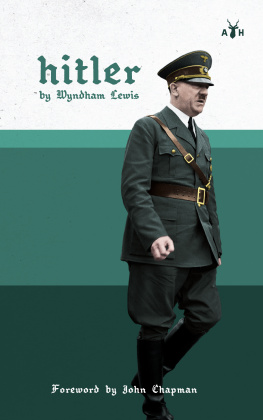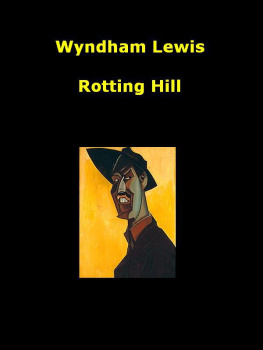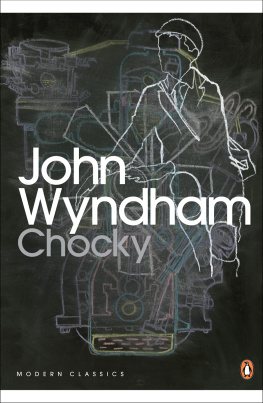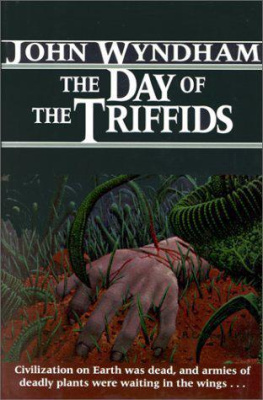Wyndham Lewis - The demon of progress in the arts
Here you can read online Wyndham Lewis - The demon of progress in the arts full text of the book (entire story) in english for free. Download pdf and epub, get meaning, cover and reviews about this ebook. year: 1955, publisher: Methuen, genre: Art. Description of the work, (preface) as well as reviews are available. Best literature library LitArk.com created for fans of good reading and offers a wide selection of genres:
Romance novel
Science fiction
Adventure
Detective
Science
History
Home and family
Prose
Art
Politics
Computer
Non-fiction
Religion
Business
Children
Humor
Choose a favorite category and find really read worthwhile books. Enjoy immersion in the world of imagination, feel the emotions of the characters or learn something new for yourself, make an fascinating discovery.

- Book:The demon of progress in the arts
- Author:
- Publisher:Methuen
- Genre:
- Year:1955
- Rating:4 / 5
- Favourites:Add to favourites
- Your mark:
- 80
- 1
- 2
- 3
- 4
- 5
The demon of progress in the arts: summary, description and annotation
We offer to read an annotation, description, summary or preface (depends on what the author of the book "The demon of progress in the arts" wrote himself). If you haven't found the necessary information about the book — write in the comments, we will try to find it.
The demon of progress in the arts — read online for free the complete book (whole text) full work
Below is the text of the book, divided by pages. System saving the place of the last page read, allows you to conveniently read the book "The demon of progress in the arts" online for free, without having to search again every time where you left off. Put a bookmark, and you can go to the page where you finished reading at any time.
Font size:
Interval:
Bookmark:
by Wyndham Lewis
ALL RIGHTS RESERVED. FIRST PUBLISHED IN THE UNITED STATES IN 1955. MANUFACTURED IN THE UNITED STATES OF AMERICA.
PAGE
introduction 1
part ihow the arts differ in their extremism 11
I Music less Extreme than Fine Arts 13
II A Brake on Musical Extremism 16
III What it Costs to have Music 18
IV The Irresponsible Freedom of the Visual Artist 20 V The Cause of the Heterogeneity in the Fine Arts
in Our Time 21
VI Amateur Artists 26 VII Those who are Accessible to an Extremist
Glamour 28
VIII There is a Limit, beyond which there is Nothing 30
IX The Ability to See the Limit 34
X 'The Unknown Political Prisoner' and After 36
XI The 'Progressive' Slave 40
part iithe painting animal and the pundit 41
XII The Painting Animal 43
XIII The Pundit-Prophet 47
XIV When the Painter is least Free 51
XV The English Way 53
XVI The American Way 55
v
part iiithe part of vanity XVII Flattery of the Artist XVIII Today the Contemporary = the Extreme XIX The Glamour of the Extreme
part iverrors of malraux
XX 'A Compact Exclusive Clan*
XXI The Coming of non-Humanistic Art
XXII Superficiality of Cultures
XXIII The Diabolical Principle
part vconclusion
postscript
I
E XTREMISM is not easy to define or to describe. It is a disease like foot and mouth disease, which disastrously visits, not cattle, but artists. It is a disease which appeared, for the first time, among European artists, not more than fifty years ago. The kinds of artist among which the symptoms were most easily identified were the painter and the sculptor. It is not, however, a virus to which the visual artist, and no other, is susceptible. It was an accident that it was among them that it first manifested itself. The first case to be reported in these islands was mine, around 1913. You may imagine the sensation createdit was like the first Colorado beetle to be spotted in our rich brown fields, clinically free of odious sub-tropical pests.
Fortunately, with me the disease did not have time to mature. Another scourge, namely war, intervened. While, in one way and another, suffering from this martial pestilence I began to think a little. I recognized that, prior to the war, I had been visited by a complaint of a most unusual kind. I saw that it was irrational to attempt to transmute the art of painting into musicto substitute for the most naturally concrete of the arts the most inevitably abstract. So of course I recovered my reason. This did not mean that I abandoned a twentieth-century way of seeing. I escapedthat was all from reaching a point, very soon, where I should have ceased to be a visual artist at all. For what I was headed for, obviously, was to fly away from the world of men, of pigs, of chickens and alligators, and to go to live in the unwatered moon, only a moon sawed up into square blocks, in the most alarming way. What an escape I had!
But to take up the question of this disease again: its identification is not always by any means easy, which is one of the most dangerous things about it. It is difficult not to mistake it for something else. It has nothing whatever to do with art, but it resembles so closely one of the most common conditions experienced by artists.
There are, indeed, several intellectual excesses in no way pathologicstrainings towards the untried, which must have existed in paleolithic times as much as in our own. For extremism , this deadly disease about which I am writing, very closely resembles, at first sight, and to the untutored eye, that healthy originality by which an artist is properly exhilarated when he notices itthat sort of 'deep and honourable difference which marks out a Franz Hals, a Magnasco, a Goya, among all his fellowswhich is a hallmark as real as a birthmark; and which is the only advantage over others which is worth having.
I hope you will believe me when I say that I am quite sure that the English school making its appearance during World War Two, and just after, is actually the finest group of painters and sculptors which England has ever known. I do not refer to achievement; I refer to the existence of so many people who understand painting, and who have revealed a high order of attainment. The Pre-Raphaelites (the only other comparable collection of artists) were parochial by comparison; this group is European.
Let me name a few: Ayrton, Bacon, Colquhoun, Craxton, Minton, Moore, Passmore, Richards, Sutherland, Trevelyan.1 Except Henry Moore the sculptor, and Graham Sutherland (though older, an integral part of this school), all of these are still young enough for me to be able to say perhaps the maximum effort has not been put forth: so let me only speak of the quality of which there has been unmistakable evidence in all of these painters. A combination of the Musee Sans Murs and of the Golden Arrow, which so quickly wafts one to Paris, has made all these artists as good as Paris-trained. This may
There are others, but I select those with whose work I am very familiar because of my 'Round the Galleries' articles in The Listener.
account for a quality which is as mature and well-equipped as if this were a band of Bretons rather than merely Britons. In looking back upon my weekly tour of the shows at the time of my Listener articles, hundreds of canvases are crowded together in my memory, from each of which I received authentic delight, which only a work of the first order is capable of producing. I remember with what enchantment I came upon a group of paintings by Trevelyan at the Galleries of Gimpel Fils, for I was not very familiar with his work; Ceri Richards' pianoforte pieces; Craxton's tank for bathing at the foot of a steep hotel; Ayrton's superb portrait of William Walton composing, the striations of the figure rhythmically associated with the vertically striated cliffa portrait which should find its place in the National Portrait Gallery; a Colquhoun portrait, of a splendid density, in the hall of the late D. Macdonald's flat, which is still vividly present to me; the water-colour vegetation of the grandest quality, a small thing by Minton; Passmore (now in great danger), a snow-lighted Thames expanse, a glittering vibration, an invention of the first order; the bitter verdure of the gallows-tree, in preparation for a Crucifixion, by Sutherland.
Now, for the average gallery-goer, each and all of these painters is an extremistan authentic extremist. In a sense, of course, they are; but not in any way the kind of extremist I am talking about in this book. None of them is touched, even, by that contagion that hurries an artist to zero and to the death of talent. And here is where the gallery-gazer has to sharpen his wits and see the gulf that lies between painters of this sort, and those who are passing over into the rocky path upon the edge of the abyssthat ultimate advance-of-all-advances, where there is no more advance because there is nothing.
When I consider this gifted mass, not one but a dozen superb image-makers, capable of almost anything, I shudder at the thought of that withering disease which might at any moment attack them (the pictures of one are already turning to wood, but he is a man of heroic mould, and I believe that he will, one day, set fire to his carpentry). But an apocalypse takes shape in my anxious mind. I see with horror Francis Bacon's elephants being stricken with extremism, grown ashen and transparent, their trunks drooping, and falling in a heap of white ashes at the foot of their canvas, livid and vast and blank. That is not all. Mildly monumental, grandly sculpted, I perceive, aghast, some work of Moore's, as beautifully defined as a thundercloud, suddenly dissolving into an absurd abstraction, until at last there is nothing left of it but a phantom sausage, convulsed and withering into a white headless worm, a beginning of nothing. Everywhere the beginnings of nothing. I see the noble form of a Pompeii of Minton's silted up with the volcanic void, the concrete nothingness that comes from the fires beneath the crust. How terrifyingly destructive! I could behold with more equanimity an apocalypse of hops, a blank desuetude ensuing from the consumption of that British national drink closely resembling urine. I could be an unmoved witness perhaps, of this generation, blossoming in many images, dissolving in a dull orgy of British beer. Perhaps I could stolidly observe this brood of brilliant painters stricken with a black vomiting which I recognized as the plague. I have experienced so much that is exceptionally tragic that, were they all gathered in the Festival Hall, by some mischance, to listen to a new symphony by Mr. Britten, and should the hall be struck, and set on fire by a meteorite, and should they all perish in the flames, I should be horrified, but I should see that God did not mean England to have painters, and I would accept this, perhaps, as another example of those actions of the divinity which we find it impossible to comprehend.
Font size:
Interval:
Bookmark:
Similar books «The demon of progress in the arts»
Look at similar books to The demon of progress in the arts. We have selected literature similar in name and meaning in the hope of providing readers with more options to find new, interesting, not yet read works.
Discussion, reviews of the book The demon of progress in the arts and just readers' own opinions. Leave your comments, write what you think about the work, its meaning or the main characters. Specify what exactly you liked and what you didn't like, and why you think so.





